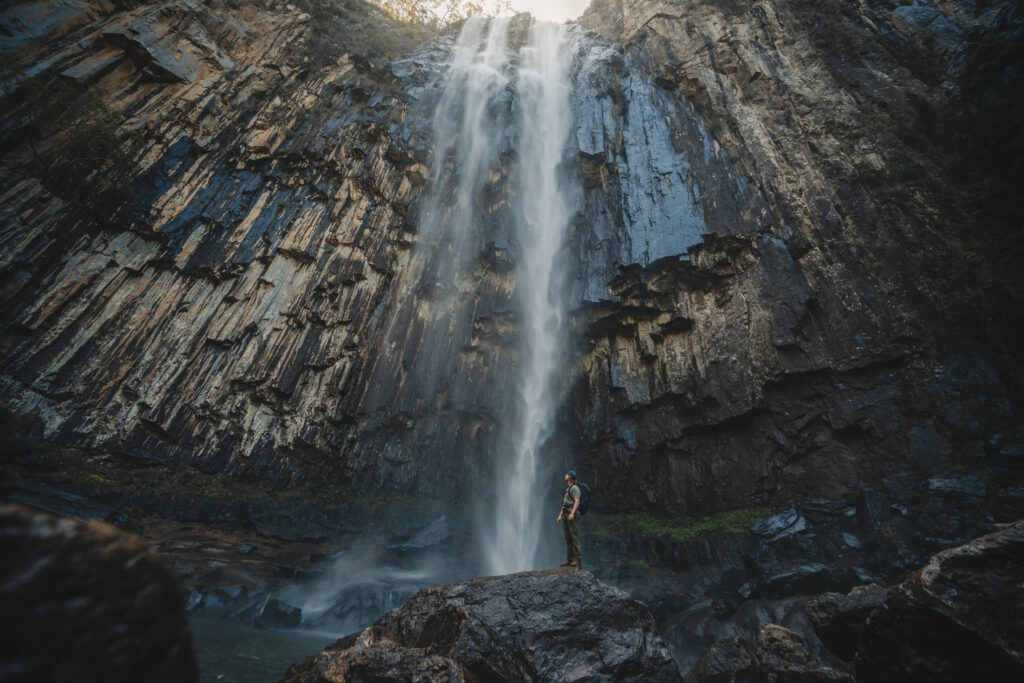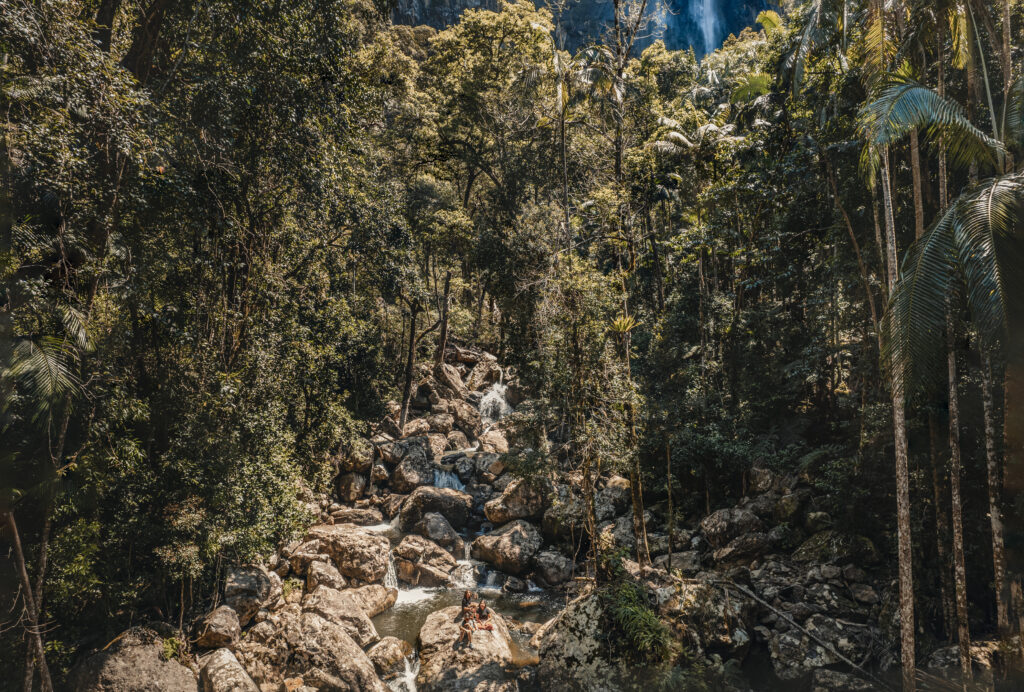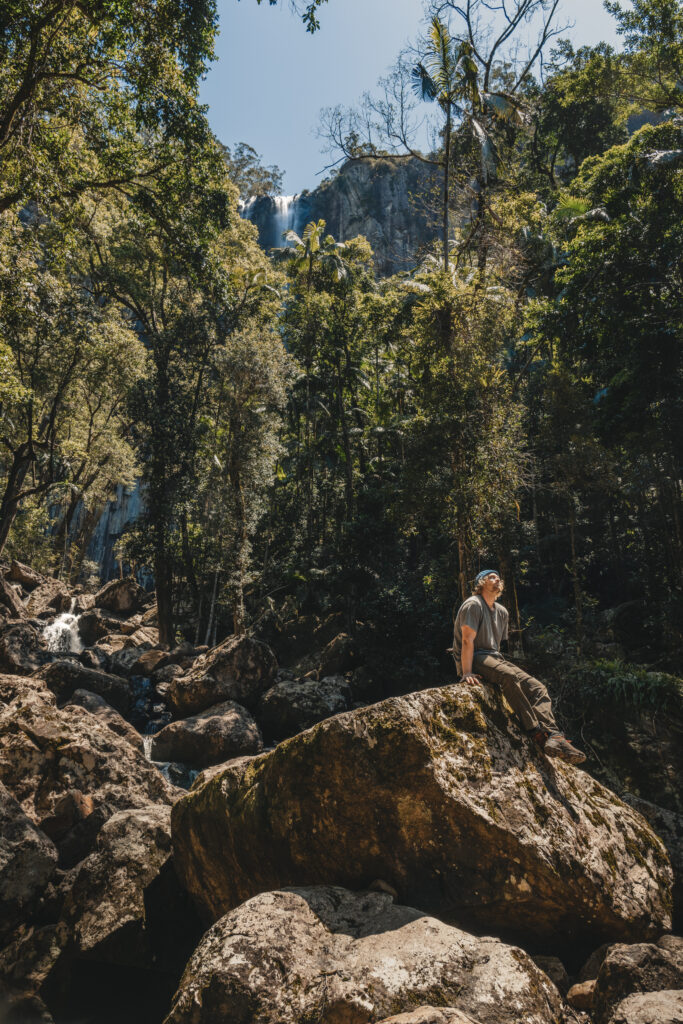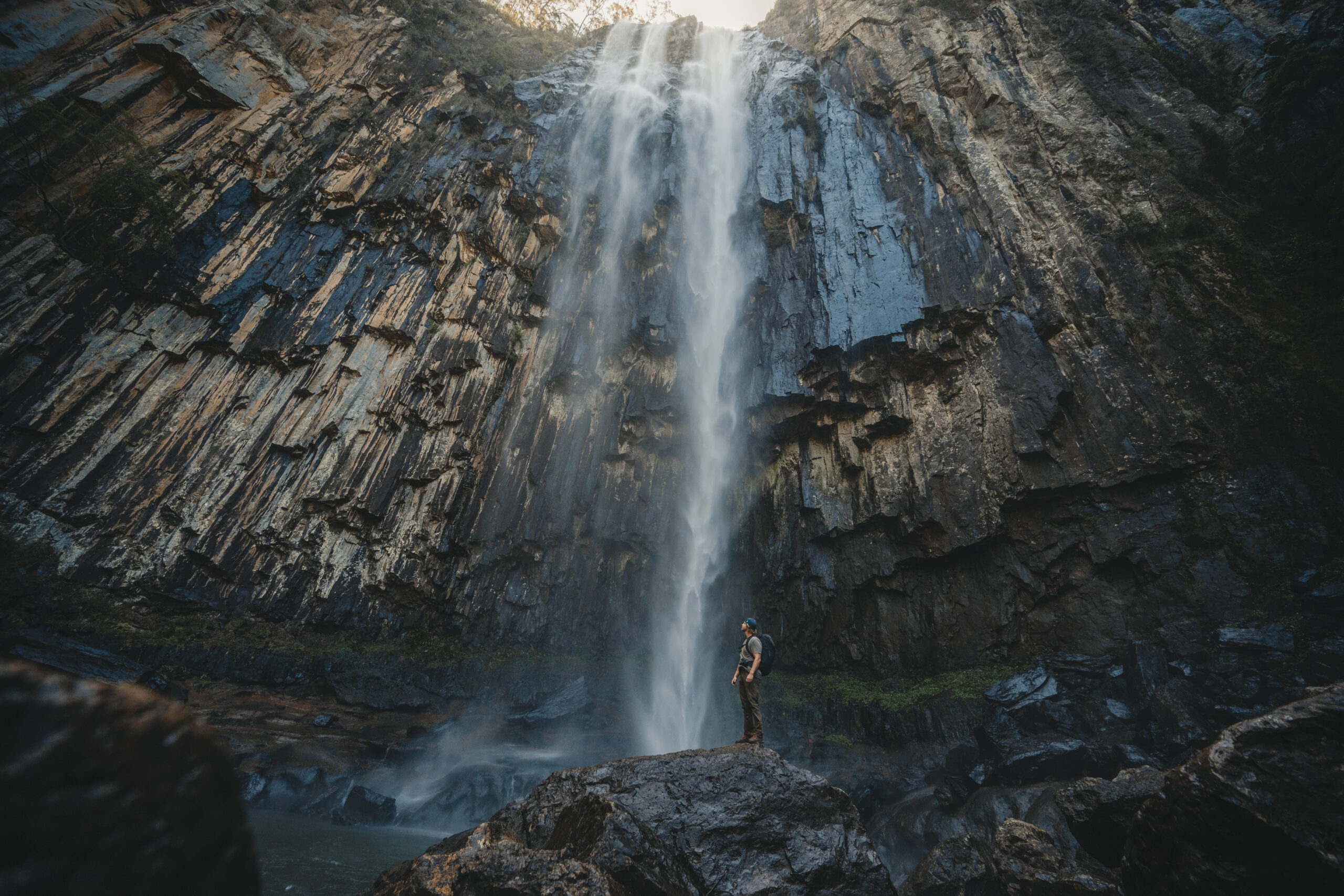Hey, what’s up? My name is Ben. I’m a content creator and photographer based on the Gold Coast, Australia, and I’m back again, surprisingly within the same month, to share a deep dive into a shoot I did for Lismore Council at Nightcap National Park in northern New South Wales.
This shoot was special for me because while I normally get paid to shoot people, products, and projects with that light, bright, neutral style, what I love most is photographing landscapes. So when the opportunity came to create a tourism campaign in a stunning national park, I was in. That said, the job came with challenges: low budget (so the cast was made up of the tour guide’s friends and relatives), lots of kids aged 7 to 13, brutal 36-degree heat, and a physically demanding schedule that included climbing, abseiling, and river crossings, all with a backpack that made me resemble a snail bound for French cuisine.



DAY ONE: SHOOTING IN CHAOS
The plan was to document adventure activities like hiking, river crossings, and climbing while making it all look both natural and epic. To tie it together, I mounted a DJI Osmo to a shoulder strap, creating an almost-doom-style POV. It wasn’t elegant, but it worked.
Right away, we started hitting what is a bit of a classic pose for nonprofessional actors: the nonsensical point. You’ll see it a lot. Someone pointing vaguely at the sky, probably just acting, pretending what they’re looking at is really interesting even if it isn’t. Still, we made it work.
I prefer sharp water in my waterfall shots over the smooth, dreamy look, so I worked that angle into both my drone and handheld shots. One of my favourites captured morning mist backlit to form a rainbow. I also used a white matte reflector to bounce sun onto a real-life couple, which gave us some genuinely nice moments. Having a group of 8 or 9 models meant a lot of coordination, especially with no walkie-talkies. I ended up phoning the guide to cue the actors from a distance.
From there, it was all about improvisation. With no way to place a flash in the middle of a lake, I relied on masking and natural reflectors. Using longer lenses like the 70–300 gave me great compression, though it meant giving up a lot of directorial control. I had to yell across rivers to get someone to look heroically at a spot in the distance.
My main gear was the Sony A1 with a 24–105mm G lens, stopped down to f7 or f8, and cropped in to 21 megapixels when needed. I had the Nikon Zf on backup, mainly with the 14–30mm S lens. Drone work came from the DJI Air 2S. And for tighter portraits, I packed a 55mm Zeiss and a Sigma 75mm macro.
We hit a lot of varied terrain. I did what I could to make it look cinematic: reflector use, white balance tweaks, and careful dodging and burning. One trick I used was shooting low and close to make climbs look steeper than they really were. Sometimes I shot composites with the drone to stitch a fuller picture of the scene.
Camping scenes were a challenge, mostly because they were shot in broad daylight. To simulate firelight, I gelled a flash with orange and placed it off-camera. It wasn’t perfect, you can tell the light’s direction, but it sold the mood well enough.
DAY TWO: CLIMBING, SWEATING, AND GEAR FUMBLES
We returned to Nightcap for more climbing, hiking and water-based activities. After hiking deep into the jungle, I realised I’d left my Sony in the car. That meant I was stuck shooting with the Nikon Zf, a camera that looks more like a hipster fashion statement than a professional tool. But after a few adjustments, basically switching from retro dials to regular wheels by putting it in ⅓ mode, I got on fine.
One of our cast members painted her face with ochre from the rocks, which added a beautiful cultural layer to the story. I climbed through rivers, slipped on rocks, and got eaten alive by leeches, all for a few good frames. Shooting while trying not to drown or destroy thousands of dollars worth of equipment isn’t exactly ideal.
Still, we made it work. I used the drone to exaggerate the steepness of climbs by tilting the camera to make slopes appear vertical. I experimented with low angles and tried to improve compositions by having subjects framed against background waterfalls. In one case, I Photoshopped a composition to pull subjects closer together in frame.
A lot of shots were about contrast, figures against the lush green or shimmering water. When I couldn’t control the light, I tried to use reflectors or flash to balance the scene. In one of my final setups, I used a gold reflector and off-camera flash to mimic late-day sunlight falling on a family around a picnic table. It matched the golden backlight well, and it closed the day on a warm note.
FINAL THOUGHTS
This was easily one of the most physically exhausting shoots I’ve ever done. Much of the time was spent simply getting to the location rather than shooting. That meant fewer setups and less variety. And while people like to say the hardest-earned shots are the best, I’m not sure that’s true. Nobody browsing a tourism site knows how much you suffered for a photo.
That said, I’m proud of what we captured. If you want to see the final results, check out visitlismore.com. The town of Lismore is still recovering from catastrophic flooding and needs all the support it can get. If you feel inspired, pay them a visit. And if you liked this post or video, thanks. If not, please keep silent.
Catch you in the next one.


